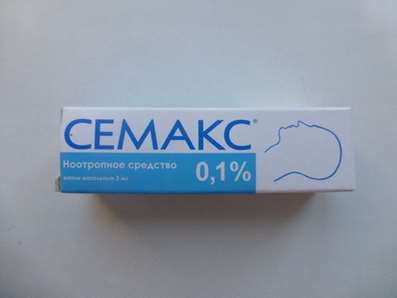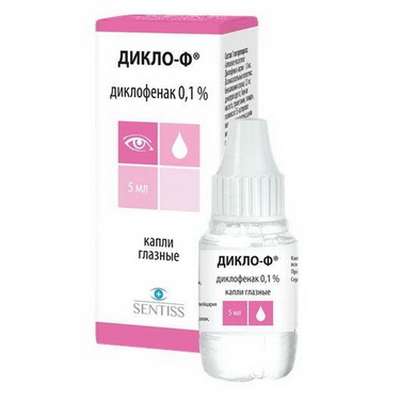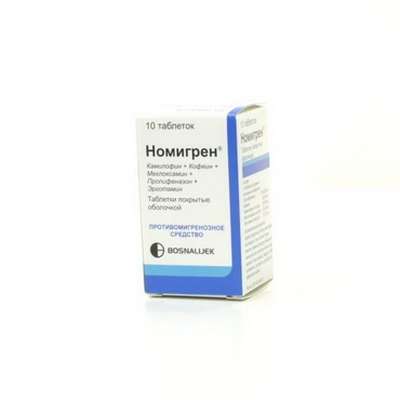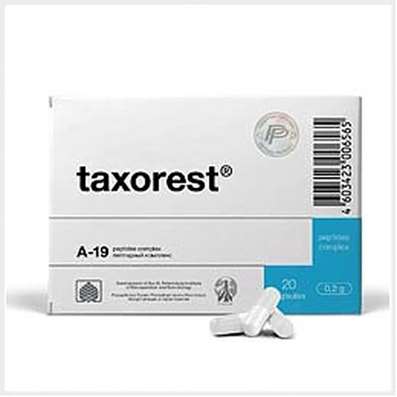Instruction for use: Akineton
I want this, give me price
Active substance: Biperiden
ATX Code
N04AA02 Biperiden
Pharmacological group
Central anthelmintic blocker [m-, n-anticholinergics]
The nosological classification (ICD-10)
G21 Secondary parkinsonism
Parkinson's Drug, Parkinsonism, symptomatic Parkinsonism, The lesions of the extrapyramidal system, Parkinson's syndrome
G25 Other extrapyramidal and motor disorders
Extrapyramidal disorders, Disorders of extrapyramidal system, Cerebellar movement disorders, Extrapyramidal hyperkinesis, Pyramidal spastic paresis, The defeat of the pyramidal system, The defeat of the extrapyramidal system
G40.9 Epilepsy, unspecified
Refractory epilepsy in children, Absence, Psychomotor epilepsy, Epilepsy, Epileptiform cramps, Epileptiform syndrome, Epileptic syndrome, Convulsive seizures, Atypical absences
H40.2 Primary angle-closure glaucoma
closure Glaucoma, Glaucoma with a narrow angle of anterior chamber, Angle-closure glaucoma, Acute angle-closure glaucoma, An acute attack of angle-closure glaucoma, Elevated intraocular pressure angle-closure glaucoma, Chronic angle-closure glaucoma
I49.9 Irregular heartbeat, unspecified
Paroxysmal supraventricular tachycardia; extrasystole arrhythmia; Atrial fibrillation tachysystolic; supraventricular tachyarrhythmia; supraventricular arrhythmias; AV reciprocating tachycardia; AV-nodal reciprocating tachycardia; ventricular fibrillation; Irregular heartbeat; Antidromic reciprocating tachycardia; Cardiac arrhythmias; Arrhythmias; Arrhythmia; Heart arythmy; Arrhythmia due to hypokalemia; ventricular tachyarrhythmias; The high frequency of ventricular contraction; Cardiac arrhythmias; Paroxysmal supraventricular arrhythmia; Paroxysmal supraventricular arrhythmia; Paroxysmal dysrhythmia; Paroxysmal atrial-ventricular rhythm; cardiac arrhythmias; supraventricular tachycardia; tachyarrhythmia; Precordial abnormal pulsation
K56 Paralytic ileus and intestinal obstruction without hernia
K59.3 Megacolon, not elsewhere classified
Toxic megacolon, Ogilvy Syndrome
N40 Prostatic hyperplasia
Prostate adenoma, BPH, Hypertrophy of the prostate, Hypertrophy of the prostate, Dysuric disorders due to benign prostatic hyperplasia, Dysuria with prostatic adenoma, Benign prostatic hyperplasia, Benign prostatic hyperplasia of stage 1 and 2, Benign prostatic hyperplasia of the first degree, Benign prostatic hyperplasia of II degree, Benign prostatic hypertrophy, Disease of the prostate, Acute urinary retention associated with benign prostatic hyperplasia, Benign prostatic hyperplasia 1 and 2 stages in combination with prostatitis, The paradoxical ishuria
R39.1 Other difficulties with micturition
Frequent urination, urinary retention, strangury, Obstructed flow of urine, Violation of urination, Violation of urination, Violation of bladder emptying, Violation of the outflow of urine, Frequent urination, Abnormalities of urination
T43.3 Antipsychotic and antipsychotics
Side effect of antipsychotics, Neuroleptic extrapyramidal syndrome, Extrapyramidal neuroleptic syndrome, Correction of side effects of antipsychotics, Correction of side effects of neuroleptics, Acute intoxication with antipsychotic drugs, Condition after acute intoxication with antipsychotic agents
T60.0 Toxic effect of organophosphorus and carbamate insecticides
Poisoning by organophosphorus compounds, Intoxication with organophosphorus compounds, Poisoning with organophosphorus compounds, Acute intoxication with organophosphorus compounds
T65.2 Toxic effect of tobacco and nicotine
Composition
Tablets 1 table.
active substance:
Biperidene hydrochloride 2 mg
Auxiliary substances: corn starch; Lactose monohydrate; MCC; Calcium hydrogen phosphate dihydrate; potato starch; Copovidone; talc; Magnesium stearate; purified water
Solution for intravenous and intramuscular injection 1 ml
active substance:
Biperidene lactate 5 mg
Auxiliary substances: sodium lactate; water for injections
Description of dosage form
Tablets: almost white, flat-cylindrical, on one side of which there is a cruciform risk, with chamfers.
Solution: clear, colorless.
pharmachologic effect
The pharmacological action is antiparkinsonian.
Pharmacodynamics
The anticholinergic drug of the central action reduces the activity of the cholinergic neurons of the striatum (the structural component of the extrapyramidal system). The peripheral anticholinergic effect is less pronounced.
Reduces tremors and stiffness. Biperiden causes psychomotor agitation, vegetative disorders.
Pharmacokinetics
Suction and distribution
After oral administration, Tmax is 0.5-2 h, Cmax is 1.01-6.53 ng / ml. Css after taking the drug inside at a dose of 2 mg 2 times / day is achieved after 15.7-40.7 hours. Bioavailability after a single oral intake is about (33 ± 5)%. Binding to plasma proteins after ingestion and parenteral administration is 91-94%. Plasma clearance is (11.6 ± 0.8) ml / min / kg of body weight. Excreted in breast milk.
Metabolism
Biperiden is completely metabolized. The main metabolites are bicycloheptane and piperidine.
Excretion
It is excreted in the form of metabolites with urine and feces. Excretion is carried out in two phases. T1 / 2 of the first phase is 1.5 hours, the second phase is 24 hours.
Pharmacokinetics in special clinical cases
In elderly patients, T1 / 2 may increase to 38 hours.
Indications
Parkinsonism syndrome in adults;
Extrapyramidal symptoms in children and adults caused by neuroleptics or similarly acting drugs;
Poisoning with nicotine or phosphorus-containing organic substances in adults (for IM and / or in administration).
Contraindications
Increased individual sensitivity to any of the components of the drug;
Angle-closure glaucoma;
Stenosis of the gastrointestinal tract;
Megacolon;
GI tract obstruction.
With caution: with prostatic hyperplasia, urinary retention, heart rhythm disturbance; Elderly patients (especially in the presence of organic brain symptoms) and patients predisposed to epileptic seizures.
pregnancy and lactation
Since the experience of using the drug Akineton® in pregnancy is limited, it should be prescribed after careful evaluation of the potential benefits of therapy for the mother and possible risk to the fetus, especially in the first trimester.
Biperiden is excreted in breast milk, in which its concentrations can reach the concentrations observed in the blood plasma, therefore, during the treatment period, breastfeeding should be stopped.
Side effects
From the side of the central nervous system: dizziness, drowsiness, weakness, fatigue, anxiety, confusion, euphoria, memory impairment; In some cases - hallucinations, delirious disorders; Nervousness, headache, insomnia, dyskinesia, ataxia, muscle cramps and speech disorders.
With increased excitation of the nervous system, especially in patients with impaired cerebral function, it is necessary to reduce the dose of the drug.
On the part of the digestive system: dry mouth, increased salivary glands, constipation, epigastric discomfort, nausea.
From the side of the organ of vision: paresis of accommodation, mydriasis, accompanied by photophobia, angle-closure glaucoma (regular monitoring of intraocular pressure).
From the CCC: tachycardia and bradycardia, lowering blood pressure.
From the urinary system: difficulty urinating, especially in patients with prostatic hyperplasia (in this case it is recommended to reduce the dose); More rarely - urinary retention.
Other: decreased sweating, allergic reactions, drug dependence.
Interaction
The use of the drug Akineton ® in combination with other anticholinergic psychotropic, antihistamine, antiparkinsonian and antiepileptic drugs can contribute to the strengthening of central and peripheral side effects.
Simultaneous administration of quinidine can cause an increase in anticholinergic cardiovascular effects (especially AV conduction).
Simultaneous administration with levodopa may increase dyskinesia.
Anticholinergics can increase the central side effects of pethidine.
When treating the drug, the inhibitory effect of ethanol on the central nervous system increases.
Akineton ® weakens the effect of metoclopramide and similarly acting remedies on the digestive tract.
Dosing and Administration
Pills
Inside, during or after eating, squeezed with liquid.
Treatment with Akineton® usually starts with small doses, gradually increasing them depending on the therapeutic effect and side effects.
Parkinsonism syndrome in adults: 1 mg 1-2 times a day (1/2 table). The dose can be increased by 2 mg (1 table) every day. The maintenance dose is 3-16 mg / day (1 / 2-2 table 3-4 times a day). The maximum daily dose is 16 mg (8 tablets). The total daily dose should be evenly divided into doses for admission during the day. After reaching the optimal dose of patients should be transferred to the drug Akineton ® retard tablets.
Extrapyramidal symptoms in children and adults caused by the action of drugs: depending on the severity of symptoms, adults 1-4 mg (1 / 2-2 table) are prescribed 1-4 times a day as a corrector of neuroleptic therapy; Children aged 3-15 years are prescribed 1-2 mg (1 / 2-1 table) 1-3 times a day.
Unwanted side effects from the gastrointestinal tract can be reduced by taking the pill right after eating. The duration of treatment depends on the severity of the disease. Cancellation of the drug Akineton ® should be started with a gradual dose reduction.
The experience of using the drug Akineton® with drug dystonia in children is limited to short courses of treatment.
Solution for intravenous and intramuscular administration
In / in, / m.
Parkinsonism syndrome in adults: in severe cases, treatment can be initiated with a dose of 10-20 mg of the drug Akineton ® (2-4 ml injection solution), divided into several injections (2 to 4), which are injected / m or in the form Slow IV infusions during the day.
Drug impairment caused by the action of drugs: adults - to quickly achieve a therapeutic response, you can appoint 2.5-5 mg of the drug Akineton ® (0.5-1 ml solution for injection) as a single dose, administered in / m or in the form of a slow IV injection. If necessary, the same dose can be re-entered after 30 minutes. The maximum daily dose is 10-20 mg of the drug Akineton ® (2-4 ml solution for injection).
Children under 10 years can be prescribed 3 mg (0.6 ml) as a slow intravenous injection; Up to 6 years - 2 mg (0.4 ml); Up to 1 year - 1 mg (0.2 ml) of the drug Akineton ®. If necessary, this dose can be re-entered after 30 minutes. Injection should be discontinued with side effects during administration.
The experience of using the drug Akineton® with drug dystonia in children is limited to short courses of treatment.
Poisoning with nicotine in adults: in addition to standard therapy, 5-10 mg (1-2 ml) and 5 mg iv are recommended in / m when the patient's life is at risk.
Poisoning with an organic phosphoric mixture: individual dosing of biperidene, depending on the degree of poisoning. Introduce / in 5 mg biperidene lactate with repeated injection until the disappearance of signs of poisoning.
Overdose
Symptoms: dilated, slowly reacting to the light pupils (mydriasis), dry mucous membranes, reddening of the skin, palpitations, atony of the bladder and intestines, hyperthermia, especially in children, and agitation, confusion, delirium, collapse.
Treatment: antidote - inhibitors of acetylcholinesterase and, above all, physostigmine, if necessary, catheterization of the bladder. Conduct symptomatic therapy.
special instructions
Side effects are observed primarily in the early stages of treatment and with too rapid a rise in the dose. Unless complications threaten life, avoid abrupt discontinuation of the drug.
In elderly patients, especially those having cerebral disorders of a vascular or degenerative nature, there may often be an increased sensitivity to the drug.
Anticholinergic drugs of a central action, similar to the drug Akineton®, can increase the predisposition to epileptic seizures. Therefore, doctors should take this fact into consideration when treating patients with this predisposition.
Late dyskinesia caused by neuroleptics may be intensified by the drug Akineton®.
Parkinsonian symptoms with advanced tardive dyskinesia in some cases are so severe that they prevent continuation of treatment with anticholinergic drugs.
Abuse of the drug Akineton ® was noted. This phenomenon may be due to the improvement in mood and the temporary euphoric effects of this drug, which are occasionally observed.
During prolonged therapy with the drug Akineton®, intraocular pressure should be checked regularly.
Influence on the ability to drive vehicles and work with machinery. Taking Akineton ®, especially in combination with other central drugs, with anticholinergics can disrupt the ability to drive and work with machinery.
Relies Form
Tablets, 2 mg. In the blister of PVC / aluminum foil (with perforated to separate the required number of tablets or without it) 10 or 20 pcs. 2 or 5 blisters (10 or 20 tablets) or 10 blisters (10 tablets each) in a cardboard bundle.
Solution for intravenous or intramuscular injection, 5 mg / ml. In an ampoule (2 ml capacity) of colorless glass of hydrolytic type 1, with an impression and a white point on the top of the ampoule or a colored kink ring, 1 ml. Ampoules can be labeled in two ways: sticking labels or marking by color printing on glass. 5 amp. In a film of deep drawing (in the open form or zaremetezirovannaja), in a pack cardboard.
Conditions of supply of pharmacies
On prescription.
Storage conditions
At a temperature not exceeding 25 ° C.
Keep out of the reach of children.
Shelf life
5 years.
Do not use after the expiry date printed on the package.

 Cart
Cart





